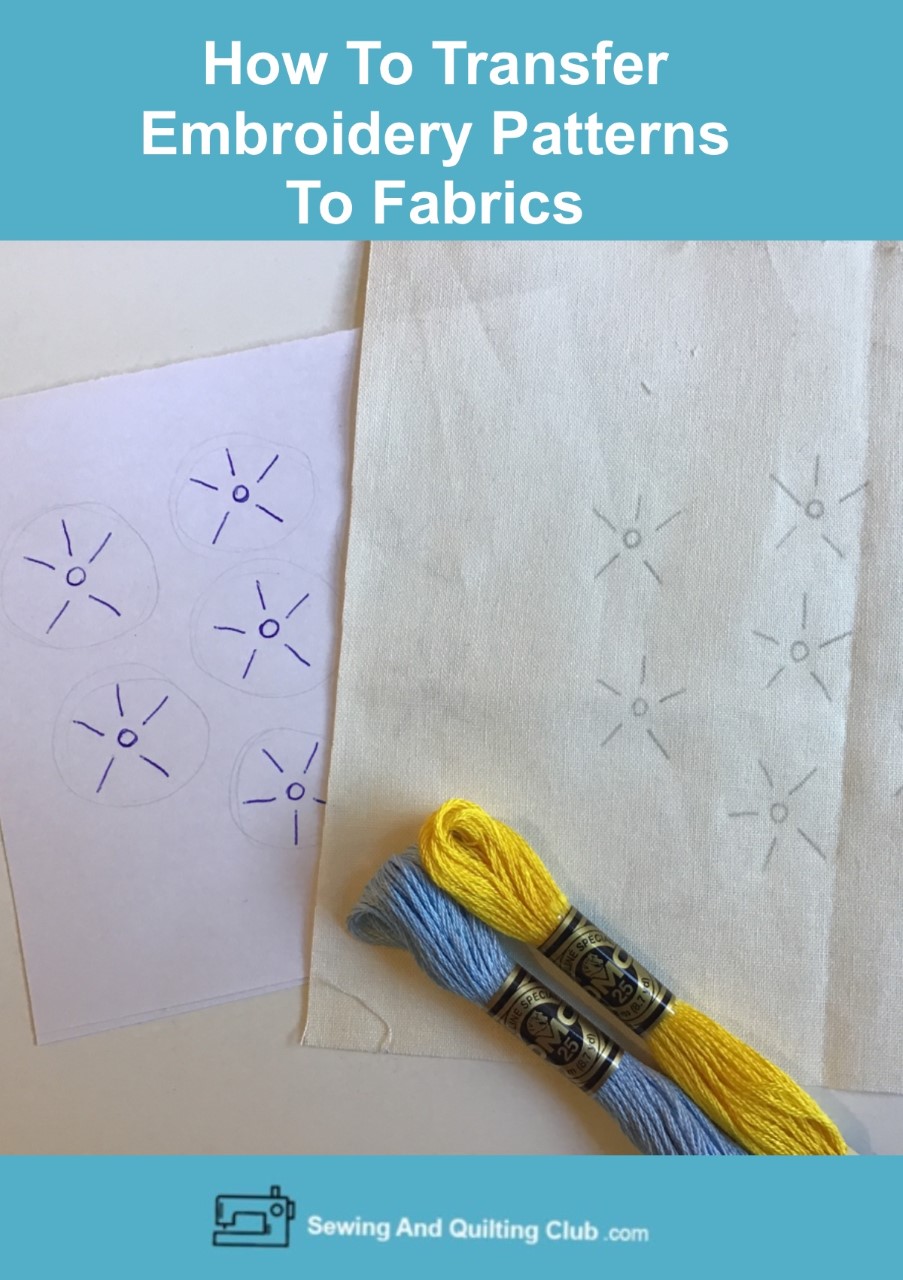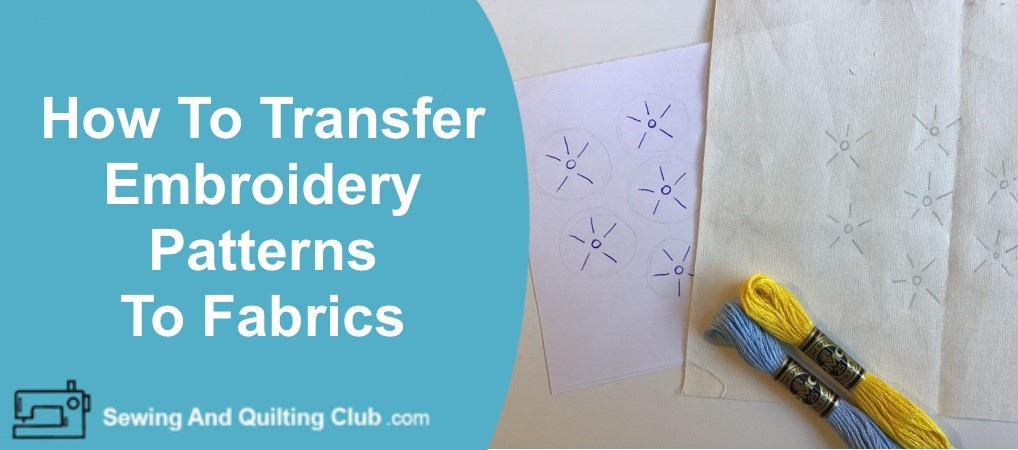Whether you’re just starting to work on your first embroidery project, or if you have been doing some embroidery for some time, it’s always good to learn the different ways to transfer an embroidery design to fabric
How To Transfer Embroidery Patterns To Fabric, using an easy method any beginner or the more advanced embroidery hobbiest can use with tools you already have at home, and in just a few minutes.
Today, anyone who is looking for a new embroidery design, can find plenty of them on the internet, some are free to download and some, you will need to pay for, but it’s always worth it.
As a beginner or someone who has been just starting to do embroidery, you might have in your hands a new design you just printed out and you might be wondering what method to use to transfer it to fabric, so let’s take a look to the easiest ways to do it:
Easy Methods To Transfer An Embroidery Pattern To Fabric
Tracing
When you’ll be working with a light colors and thin fabric, you can lay your pattern under the fabric and trace the pattern on the fabric with a pen or pencil for fabrics.
If you have any problem to see the pattern through the fabric, you can place the pattern and the fabric on a light box or tape the design and the fabric on a window with daylight and then you can trace your pattern on your fabric with ease.
Embroidery Transfer Paper
Whether you’re using a thin or thick, and a light or dark color fabric for your embroidery project, you can use a carbon or wax transfer paper made for dressmakers. The Dressmaker’s transfer paper is made on one side with a powdery, color ink that is made to be used to mark any fabric and it will be washed out without leaving any mark on the fabric.
You can find this transfer paper in different colors, so you can choose one that will work good on your fabric, use light and bright colors for dark fabrics, as white, yellow, light blue or pink, and use dark colors like black, gray or navy blue for light color fabrics.
When working to transfer a design to your fabric, lay the fabric with the pretty side up on your work table, lay over the fabric the transfer paper with the powdery ink side down and lay on top the paper with the embroidery design, you always can tape the three layers while you work on transferring the design, so the different layers don’t move around.
Transfer the embroidery design with a pencil or with a pen and when you finish you can take off the paper with the design and the transfer paper, and the embroidery pattern will be transferred on your fabric.
This method has been used for many years, and it works great, just be careful when working on your project and don’t touch the design with your fingers or with any other fabric as the powdery ink can disappear from the fabric.
Tracing Paper
Tracing paper is another way to work on an embroidery project when the fabric you use is hard to trace a design on it, like wool or knit fabrics.
You can draw or transfer the design to the tracing paper, and paste the tracing paper with the design on the fabric. Work on the embroidery and follow the instructions to remove the tracing paper from your fabric, as some needs to be torn off and some are water washable.
Hot Iron Transfer
Most of the Hot Iron Transfers are patterns ready to use that you can purchase at hobbies and crafts stores or online. These transfers are easy to use and you will need to place the transfer on your fabric, ink side down, and iron the paper with a hot iron.
Pouncing
This method was commonly used before the modern times of embroidery and it worked quite well, as you will make your pattern on paper with a pencil or a pen and then you will need to prick the pattern lines with a pin or a needle. The second step will be to secure your paper pattern onto the fabric and then you can powder a pigment through the holes on the paper.
The Pouncing method is still used and you can purchase the powdered pigment at embroidery art stores, or it can be ordered online.
Learn more about Embroidery here!
Thanks so much for reading my blog today!


